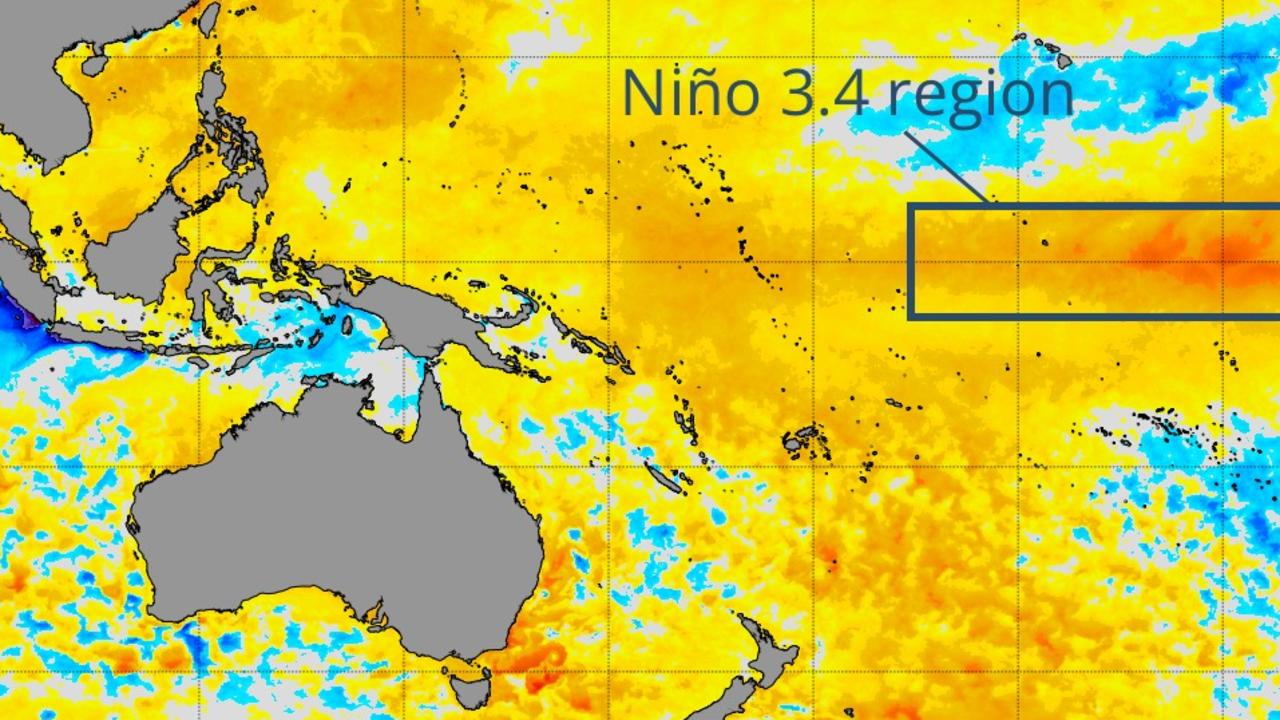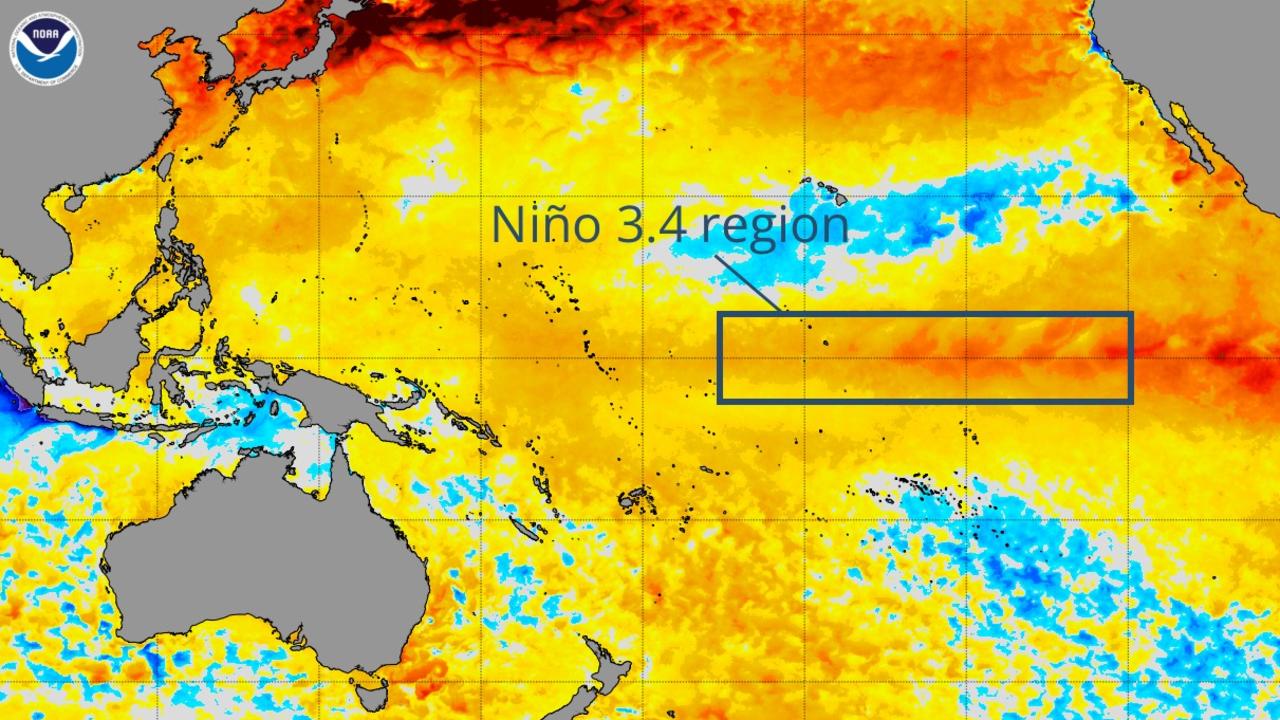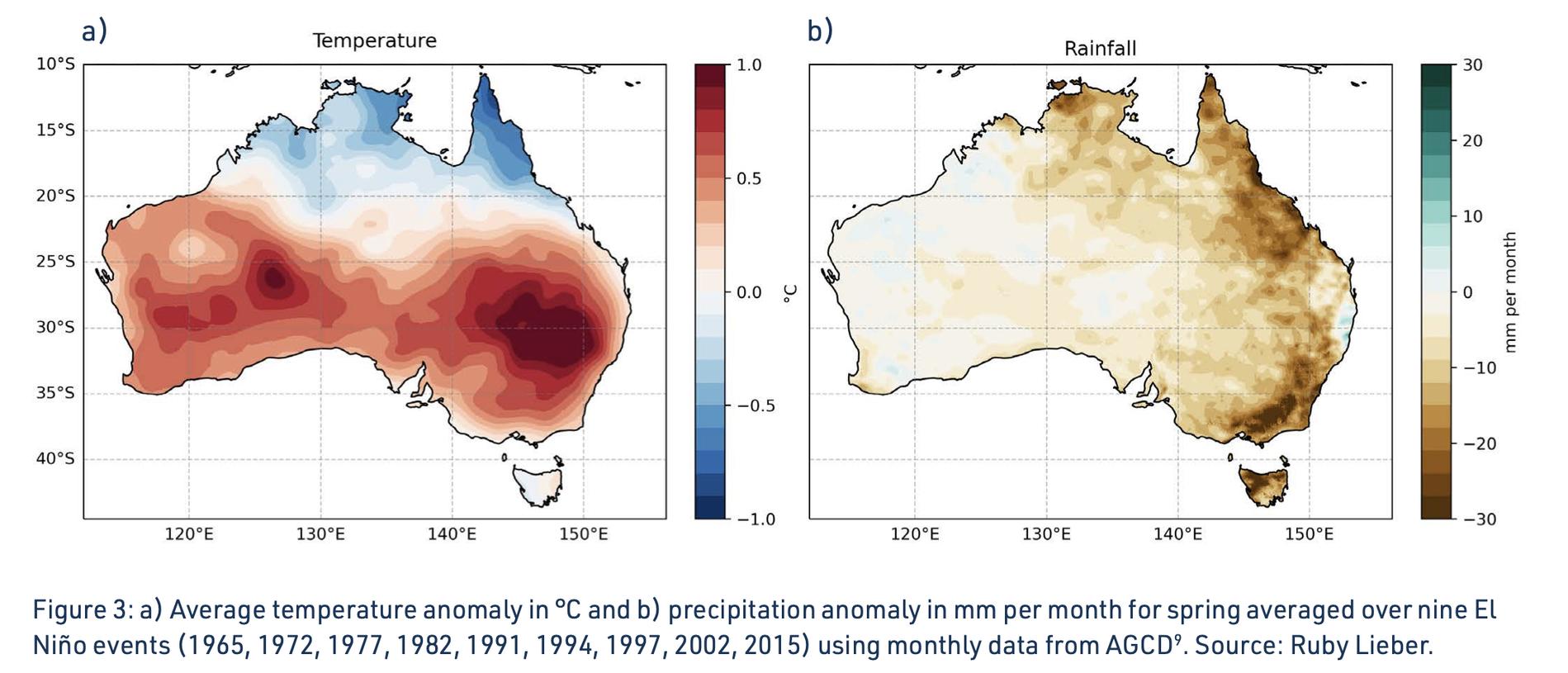Australia weather: When El Nino is predicted to end
The BOM predicts this year’s El Nino will be a “sustained” event. Here’s exactly how long it’s expected to last.

The Bureau of Meteorology has spoken: El Nino has been declared and is underway.
But with the twin possibilities of long, balmy summer days and higher risk of bushfires, Aussies may already be asking, when will it end?
Here’s what we know so far.

What does El Nino mean?
El Nino is the sibling climate event to La Nina, which Australia just experienced for three consecutive years.
El Nino and La Nina dictate, in simple terms and respectively, whether Australia will experience a hot and dry or a wet summer. The climate driver has a third state — neutral — which tends to mean fewer extreme weather events.
The BOM has four criteria by which to declare El Nino, three of which must be met.
“Oceanic indicators firmly exhibit an El Nino state,” the BOM said.
“Central and eastern Pacific sea surface temperatures continue to exceed El Nino thresholds.
“Models indicate further warming of the central to eastern Pacific is likely.”

What will El Nino bring?
El Nino is associated with a hot, dry summer with greater potential for droughts and bushfires.
Nine of southeast Australia’s 10 driest winter-spring periods occurred during El Nino events, while many major droughts — including in 1982, 1994, 2002, 2006 and 2015 — coincided with El Ninos, according to the Australian Research Council’s Centre of Excellence for Climate Extremes.
Days tend to be hotter during El Nino years, especially in southern Australia. In Northern Australia, there is a greater chance of multi-day heatwaves.
This year, El Nino has also occurred in combination with another climate driver, a positive Indian Ocean Dipole (IOD). That means the heat and dryness we associate with El Nino tend to be exacerbated.
According to the BOM: “A positive IOD typically leads to reduced spring rainfall for central and southeast Australia.
“When a positive IOD and El Nino occur together, their drying effect is typically stronger and more widespread across Australia.”
That being said, there is still some wiggle room, since every El Nino event varies in its intensity.

When will El Nino end in Australia?
When the BOM declared El Nino, it predicted the climate driver will stick around for at least three months.
But, in its climate driver update, the BOM also hinted at a more prolonged reign.
“Climate model outlooks suggest this El Nino is likely to continue until at least the end of the southern hemisphere summer 2023–24,” the BOM wrote.
More Coverage
That means, at least according to some models, El Nino is likely to dominate the Australian climate system until at least February 2024.
After El Nino wanes, Australia’s climate will return to either its La Nina or neutral state.
Get in touch — chloe.whelan@news.com.au






